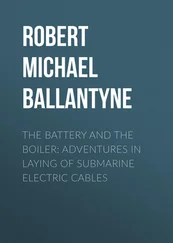Michael Neufeld - The Rocket and the Reich
Здесь есть возможность читать онлайн «Michael Neufeld - The Rocket and the Reich» весь текст электронной книги совершенно бесплатно (целиком полную версию без сокращений). В некоторых случаях можно слушать аудио, скачать через торрент в формате fb2 и присутствует краткое содержание. Город: Washington, Год выпуска: 2013, ISBN: 2013, Издательство: Smithsonian Books, Жанр: История, military_weapon, на английском языке. Описание произведения, (предисловие) а так же отзывы посетителей доступны на портале библиотеки ЛибКат.
- Название:The Rocket and the Reich
- Автор:
- Издательство:Smithsonian Books
- Жанр:
- Год:2013
- Город:Washington
- ISBN:978-1-58834-466-3
- Рейтинг книги:3 / 5. Голосов: 1
-
Избранное:Добавить в избранное
- Отзывы:
-
Ваша оценка:
- 60
- 1
- 2
- 3
- 4
- 5
The Rocket and the Reich: краткое содержание, описание и аннотация
Предлагаем к чтению аннотацию, описание, краткое содержание или предисловие (зависит от того, что написал сам автор книги «The Rocket and the Reich»). Если вы не нашли необходимую информацию о книге — напишите в комментариях, мы постараемся отыскать её.
The Rocket and the Reich — читать онлайн бесплатно полную книгу (весь текст) целиком
Ниже представлен текст книги, разбитый по страницам. Система сохранения места последней прочитанной страницы, позволяет с удобством читать онлайн бесплатно книгу «The Rocket and the Reich», без необходимости каждый раз заново искать на чём Вы остановились. Поставьте закладку, и сможете в любой момент перейти на страницу, на которой закончили чтение.
Интервал:
Закладка:
ARMY ORDNANCE AND THE BALLISTIC MISSILE
As the enthusiastic amateur groups stumbled forward into the new territory of liquid-fuel rocketry without a map, but with the goal of spaceflight on the distant horizon, Becker and his subordinates began to chart a path toward their own objective: the ballistic missile. Long-range artillery had approached its limits with the Paris Gun, a special 21-centimeter (8.25-inch) howitzer used by the Germans to shell the French capital from 130 kilometers (80 miles) away in the spring of 1918. Becker had worked as an assistant on that spectacular project. After lobbing only 320 shells, however, each with 10 kilograms (22 pounds) of high explosives, the gun wore out its main and reserve barrels and had made little impact on French morale. By replacing conventional gunnery with liquid-fuel rocket engines, one could eliminate not only barrels and their massive supporting equipment but also all limits on range and payload. Moreover, Becker believed, the surprise deployment of stunning new weapons could have a dramatic effect on the enemy’s psychology. A rain of fairly accurate long-distance projectiles might even cause the collapse of enemy morale. That idea had failed with the Paris Gun, but the sudden deployment of a much larger projectile based on a revolutionary technology could be effective. To produce the necessary shock and surprise, it would be imperative to develop the ballistic missile in absolute secrecy, even though it was not outlawed by Versailles. Secrecy would have the added benefit of concealing the missile’s potential from the other powers. 25
Such were the concepts that stood behind Army Ordnance’s growing commitment to liquid-fuel rocketry from 1930 to 1932. Becker’s group nevertheless moved only haltingly toward an investment in the infant and unproven technology. After the abortive attempt to support Oberth and Nebel in 1930, the ballistics and munitions section did little with liquid fuels for nearly a year. The cash-strapped Ordnance rocket project, itself only a small part of artillery development under Becker, focused instead on the feasibility of unguided, solid-fuel battlefield weapons with poison gas or high-explosive warheads. The first sign of renewed interest in the more advanced technology came on October 16, 1931, when Becker wrote to the Heylandt company requesting a confidential meeting between Captain von Horstig and Paul Heylandt. Becker expressed interest in the company’s “liquid-fuel blow-pipe.” His awkward use of the term “blow-pipe,” instead of “rocket” or “motor,” shows that he was unfamiliar with the technology. 26
Becker’s inquiry was sparked by a new rocket car that the Heylandt company had finished and tested in April–May 1931. After the death of Valier, Arthur Rudolph had continued to experiment with the engine to determine why its combustion was so unstable. He did so against the express orders of Heylandt and almost lost his job as a result. Sometime in late 1930 or early 1931, Paul Heylandt started a new rocket-car project. He was still fascinated with advanced technology and was interested in recouping his investment of more than twenty thousand marks in Valier’s experiments. Most of the work on the car was done by Riedel and his superior, Alfons Pietsch, and Rudolph helped produce a much improved, regeneratively cooled engine with about 160 kg of thrust. Heylandt returned from a trip to the United States in time for the public trials, but the impact of the Depression plus the fading of enthusiasm for rocket stunts made the new car a financial and public relations flop. Pietsch lost his job shortly thereafter in one of the company’s many layoffs. The car was shown again during the summer months, but with no better result—at least until Becker inquired about its engine. 27
A number of things may have sparked Ordnance’s renewed attention to liquid-fuel rocketry, beyond a general interest in the futuristic ballistic missile concept, which most military officers of that era would have regarded as Utopian or impossible. During the spring and summer of 1931, the activities of the Raketenflugplatz, the Heylandt group, and Johannes Winkler had made the technology more visible and viable. Army Ordnance may also have been influenced by the political climate. During the proceeding year the country had begun to slide into chaos. The mass unemployment of the Great Depression, combined with the Weimar Republic’s already weak popular support, had led to political polarization and street fighting. On the far left, the Communists gained much ground, but their gains were eclipsed by the extreme right-wing National Socialists (Nazis), who leaped from marginality to major party status in the national elections of 1930. The weak Weimar cabinet of Chancellor Heinrich Brüning also became increasingly conservative and authoritarian. In this poisonous environment, nationalist interest in new weapons technologies and rearmament grew. The military possibilities of rocketry were mentioned more often in the press, among others by Nebel, who tried jingoistic appeals for funds. Nebel was a supporter of the ultraconservative German National People’s Party and a member of its massive veterans’ organization, the Stahlhelm (Steel Helmet), but he was not opposed to the Nazis. He had written to Adolf Hitler to ask for support for rocketry as early as January 1930, and to Hermann Göring and Josef Goebbels thereafter—to no avail. 28
Becker and his assistants—von Horstig, Schneider, and Dornberger—shared Nebel’s extreme right-wing politics even as they despised his slippery, self-promotional character. But the budget and the ambitions of the ballistics and munitions section were still modest. When Becker approached Heylandt in October 1931, his first interest was fundamental research into the technology. At the outset of the negotiations, Becker wanted to purchase the rocket-car engine for testing at Ordnance facilities, but in November he decided only to issue Heylandt a study contract on the correct form for the nozzle and combustion chamber. Using compressed air would eliminate the dangers and difficulties of measuring a burning engine, and the results would be equally valid for solid or liquid fuels. The company had already begun those experiments when it received the contract in December. The report, which appeared at the end of April 1932, showed that the commonsense assumption that a long and narrow nozzle was superior was not borne out. The best results were obtained with the largest angle of opening between the sides of the nozzles tested: fifteen degrees. Later experience would show that such an angle was still too small by a factor of two, but the study was the beginning of the Army’s much more scientific—and secret—approach to liquid-fuel rocketry. 29
After another long and unexplained delay, in October–November 1932 Becker’s Section 1 negotiated a new contract with the Heylandt company for a small 20-kg-thrust liquid-oxygen/alcohol engine. It would be based on experiments done by the company at its own expense in the preceding months. Meanwhile, Ordnance had not finished dealing with the rocket groups and inventors. Becker and von Horstig had been distracted over the winter of 1931–32 by the claims of Wilhelm Belz of Cologne, who was said to have launched a liquid-fuel rocket to several hundred meters in altitude and six kilometers in range. Reflecting the increasing influence of the far right, Belz’s claims had been strongly supported by a heavy artillery veterans’ organization in Munich, one of whose members was in contact with the Nazi leader Rudolf Hess. It soon turned out, however, that Belz was a fraud. He had apparently used a Sander black-powder rocket to achieve an ascent much more modest than that claimed. 30
The time wasted on Belz notwithstanding, Ordnance had made an important step toward building up its own liquid-fuel rocket program in its work with Heylandt. An even more important step came from renewed contacts with the Raketenflugplatz. Although earlier he had declared Nebel beyond the pale, Becker reversed himself in early 1932. He, von Horstig, and Dornberger visited the Raketenflugplatz more than once dressed in civilian clothing to look less conspicuous. After negotiations, Becker officially wrote to Nebel on April 23, 1932, inviting him to make a secret demonstration launch at the Kummersdorf weapons range, 40 km southwest of Berlin. The rocket was to eject its parachute and a red flare at the peak of its trajectory. The terms were very strict: If they were fulfilled Nebel would be paid 1,367 marks for expenses; if not, he would receive nothing. 31
Читать дальшеИнтервал:
Закладка:
Похожие книги на «The Rocket and the Reich»
Представляем Вашему вниманию похожие книги на «The Rocket and the Reich» списком для выбора. Мы отобрали схожую по названию и смыслу литературу в надежде предоставить читателям больше вариантов отыскать новые, интересные, ещё непрочитанные произведения.
Обсуждение, отзывы о книге «The Rocket and the Reich» и просто собственные мнения читателей. Оставьте ваши комментарии, напишите, что Вы думаете о произведении, его смысле или главных героях. Укажите что конкретно понравилось, а что нет, и почему Вы так считаете.












